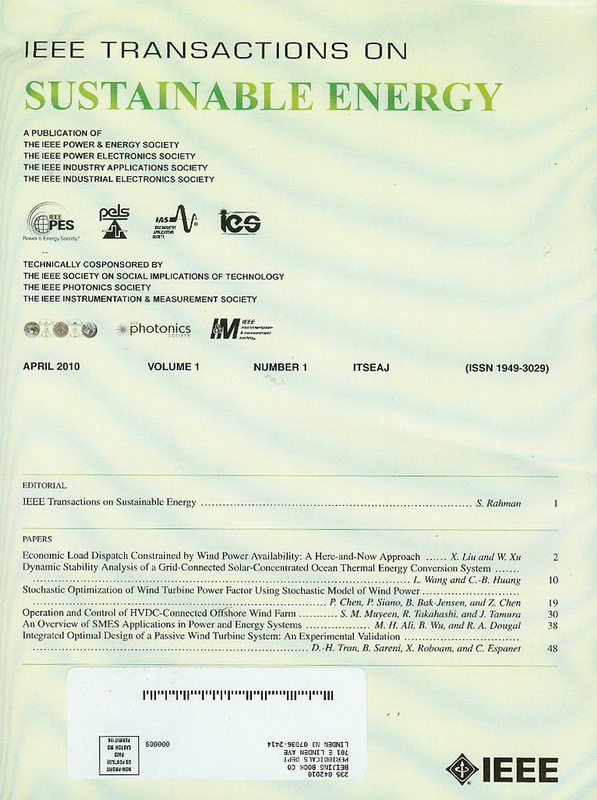基于新型三参数特性曲线的光伏电源调频与最大功率同步策略
IF 10
1区 工程技术
Q1 ENERGY & FUELS
引用次数: 0
摘要
光伏(PV)源的大规模集成可能会降低系统惯性和电能质量,由于缺乏一次频率调节(FR)能力,导致频率波动增加,系统稳定性降低。针对这些挑战,本文提出了一种统一的光伏电源频率调节和最大功率点跟踪(MPPT)策略,为电网提供辅助服务。该策略采用专门设计的有功功率控制(APC)方法,实现光伏电源的快速、灵活的功率调节,并进一步实现FR功能。本文提出的APC算法采用迭代技术,采用新颖的三参数光伏特性曲线,可以实时重建光伏发电模型,明确系统频率、输出功率和工作电压之间的关系。其控制精度高、收敛速度快、可解释性强,具有重要的实用价值。此外,这种自适应控制策略在FR和MPPT模式之间自主切换,适应实时辐射变化,无需额外的辐射或温度传感器。该集成提高了太阳能利用效率和FR能力,同时消除了操作模式切换期间控制器的转换。硬件在环测试验证了所提策略的可行性和有效性。本文章由计算机程序翻译,如有差异,请以英文原文为准。
A Unified Strategy for Frequency Regulating and MPPT for Photovoltaic Sources Based on a Novel Three-Parameter Characteristic Curve
The large-scale integration of Photovoltaic (PV) sources may reduce system inertia and power quality, resulting in increased frequency fluctuations and diminished system stability due to lack of the primary frequency regulation (FR) capability. To address these challenges, this paper proposes a unified strategy for frequency regulating and Maximum Power Point Tracking (MPPT) for PV sources to provide ancillary services to the power grid. The strategy employs a specifically designed active power control (APC) method to enable rapid and flexible power adjustments of PV sources, with which further FR function may be achieved. The presented APC algorithm adopts an iterative technique with a novel three-parameter PV characteristic curve, making it possible to reconstruct the real-time PV generation model, clarify the relationship between the system frequency, output power, and operating voltage. Its high control accuracy, fast convergence rate, and strong explainability offer significant practical value. Additionally, this adaptive control strategy features autonomous switch between the FR and MPPT modes adapting to real-time irradiation changes, without the need for additional irradiation or temperature sensors. The integration enhances both solar utilization efficiency and the FR capability, while eliminating the controller transitions during operating mode switches. Hardware-in-the-loop tests validate the feasibility and effectiveness of the proposed strategy.
求助全文
通过发布文献求助,成功后即可免费获取论文全文。
去求助
来源期刊

IEEE Transactions on Sustainable Energy
ENERGY & FUELS-ENGINEERING, ELECTRICAL & ELECTRONIC
CiteScore
21.40
自引率
5.70%
发文量
215
审稿时长
5 months
期刊介绍:
The IEEE Transactions on Sustainable Energy serves as a pivotal platform for sharing groundbreaking research findings on sustainable energy systems, with a focus on their seamless integration into power transmission and/or distribution grids. The journal showcases original research spanning the design, implementation, grid-integration, and control of sustainable energy technologies and systems. Additionally, the Transactions warmly welcomes manuscripts addressing the design, implementation, and evaluation of power systems influenced by sustainable energy systems and devices.
 求助内容:
求助内容: 应助结果提醒方式:
应助结果提醒方式:


